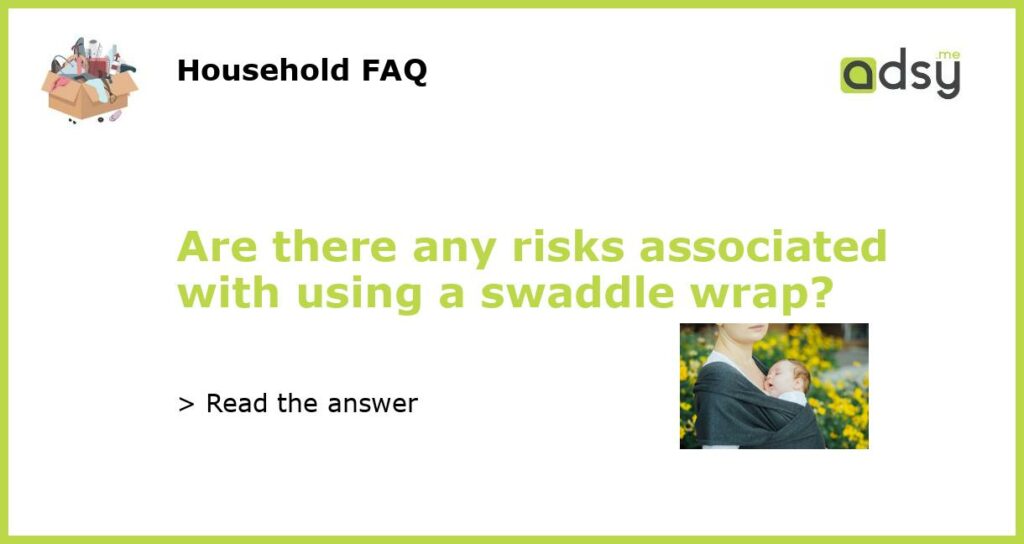The Benefits of Swaddle Wraps
Swaddle wraps are a popular choice for many parents because of the numerous benefits they offer. Not only do swaddle wraps help with soothing and calming babies, but they also promote better sleep and provide a safe and secure environment for newborns. The snug wrapping mimics the feeling of being in the womb, which can help babies feel more secure and comfortable. Swaddle wraps also help to prevent the startle reflex, which can cause babies to wake up suddenly and become distressed. Additionally, swaddle wraps can help to regulate a baby’s body temperature and prevent them from scratching themselves.
Potential Risks of Swaddle Wraps
While swaddle wraps offer many benefits, there are also some potential risks associated with their use. One of the main concerns is that swaddling too tightly can restrict a baby’s movement and potentially lead to hip dysplasia. Hip dysplasia is a condition where the hip joints are not aligned correctly, and swaddling can contribute to this misalignment if the legs are wrapped too tightly. It is important to ensure that the swaddle wrap allows for movement of the hips and legs to prevent this risk. Another potential risk is that swaddling can raise a baby’s body temperature, which can increase the risk of overheating and Sudden Infant Death Syndrome (SIDS). It is crucial to monitor a baby’s temperature while swaddled and use lightweight, breathable fabrics to reduce this risk.
Safe Swaddling Practices
To minimize the risks associated with using swaddle wraps, it is essential to follow safe swaddling practices. Firstly, the swaddle wrap should be loose enough for a baby to move their hips and legs freely. The legs should be able to bend up and out at the hips. Secondly, the swaddle wrap should fit snugly around the upper body and secure the arms to prevent the startle reflex. However, it is essential to leave enough room for the baby’s chest to expand comfortably. Thirdly, swaddle wraps should be made from lightweight, breathable fabrics to prevent overheating. Additionally, it is essential to regularly check a baby’s temperature while swaddled to ensure they are not too hot. Finally, it is crucial to stop swaddling once a baby shows signs of rolling over to prevent suffocation hazards. As soon as a baby can roll from back to front, swaddling should be discontinued to ensure their safety.
Alternatives to Swaddle Wraps
If parents are concerned about the risks associated with using swaddle wraps, there are alternative sleep solutions available. Sleep sacks, also known as wearable blankets, are a popular choice for many families. They provide a similar sense of security and prevent the startle reflex but allow for more movement of the legs and hips. Sleep sacks are designed to be worn over regular sleepwear and can help regulate a baby’s body temperature without the need for tight wrapping. Additionally, there are blankets and wraps available that provide a looser swaddling technique, allowing for more freedom of movement while still offering some of the benefits of swaddling. It is important to research and choose a sleep solution that aligns with safe sleep practices and suits the individual needs of the baby.
While swaddle wraps have many benefits, it is essential to be aware of the potential risks associated with their use. By following safe swaddling practices, such as ensuring the wrap is not too tight, using lightweight materials, and regularly monitoring a baby’s temperature, parents can minimize these risks. However, if parents are still concerned, there are alternative sleep solutions available that can offer similar benefits while allowing for more freedom of movement. Ultimately, the decision to use a swaddle wrap or opt for an alternative sleep solution is up to the parents and should be based on what they feel is best for their baby’s safety and comfort.






